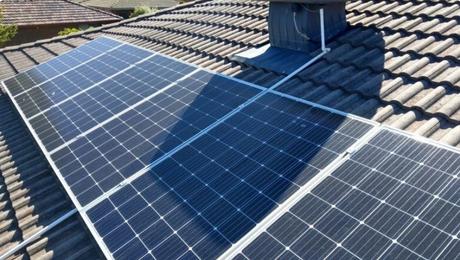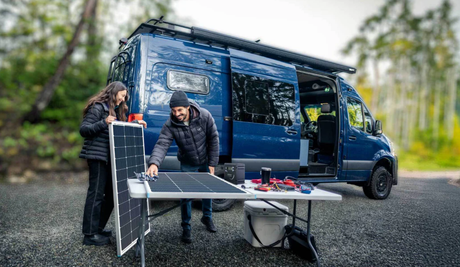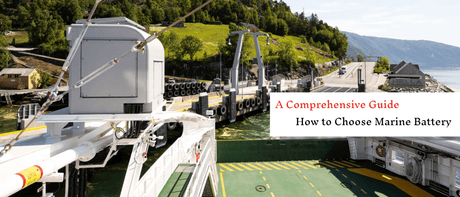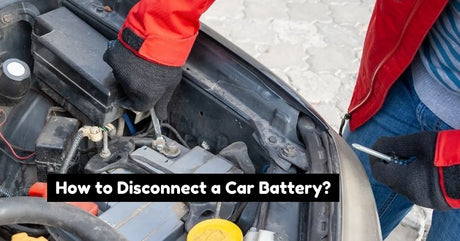Renewable energy in Canada is no longer limited to large corporations or wealthy investors. More and more Canadians opt to utilize solar panels in their homes to cut back on fossil fuels and maintain a reliable energy source. Plus, when a solar energy system is connected to a battery bank, users can store energy to use later.
Because solar batteries in Canada offer so many advantages, Canadians have various options to choose from, which can feel a bit overwhelming. Before selecting a random battery that may not be the ideal choice, it’s best to understand what solar batteries are, how they work, and the similarities and differences between battery types.
What Is a Solar Battery and How Does It Work?
We all rely on energy sources to power our electronic devices, whether by inserting batteries into a remote or plugging in a blender to a power outlet. For many of us, it’s easy to take reliable energy for granted because it is so readily available in various forms. However, any time the local electricity grid loses power or you’re left without a charging cord for your phone, you quickly realize just how much we depend on energy.
The first working battery was invented around 200 years ago, and it completely changed energy storage. As this technology progressed and improved, batteries impacted our day-to-day lives in ways we wouldn’t have been able to imagine. From wireless remotes in our homes to portable laptops on planes to medical equipment in hospitals, batteries provide us with a level of convenience and flexibility we’ve come to expect in life.
That convenience and flexibility can now also be applied to solar panel kits thanks to solar batteries. Solar panels function by absorbing energy from the sun during what’s known as peak sun hours. This period occurs during the middle part of the day when the sun is at its strongest and can range from only an hour or two up to eight or even ten hours when conditions are right.
While only an hour or two of peak sun hours can be enough to operate a solar panel system, many Canadian home energy needs peak in the morning and evening, not midday. That’s where solar batteries come into play. Your solar panel setup can collect and convert solar energy when it’s available and then simply store it in the battery bank until your home needs it. Some solar batteries in Canada can manage to store that energy for up to a year, so you never need to worry about not getting the backup power you need.
A solar energy system doesn’t just contain solar panels and solar batteries, though. Another component of any system is an inverter. This device gathers the direct current (DC) energy from the panels and converts it to alternating current (AC). AC is what most of your home appliances need to operate, which is why having your solar batteries store AC energy is necessary.
Many different and fantastic things may come to mind when people think of Canada, such as friendly people, snow, and maple syrup. But, one thing that probably won’t pop into someone’s head is long, sunny days. Canada’s northern location on the Earth means cumulative sun hours during the year, making storing solar energy in batteries all the more useful for Canadians.
Experiencing a power outage in the middle of a Canadian summer may not be so challenging, but things can go downhill very fast when it happens in the dead of winter. Rather than worry about pipes freezing or keeping everyone warm, solar batteries in Canada can give you peace of mind that your home will remain a haven in times of need.
What Is a Deep-Cycle Battery?
At first glance, a deep-cycle battery may look a lot like the battery you’ll find under the hood of your car. Besides appearances, though, the two types of batteries are quite different. Car batteries create quick, short bursts of energy, while deep-cycle batteries provide sustained energy over a prolonged period.
For this reason, deep-cycle batteries are perfect for solar system setups. They also come in different types, much like other kinds of batteries. Let’s see how deep-cycle batteries can work for solar purposes.
Types of Solar Batteries
It’s evident that having batteries for solar energy systems is practically essential in Canada. Since we have that cleared up, now is the time to decide which type of solar battery fits your needs. One of the most important factors to consider is if your system is grid-tied or off-grid. Most Canadian homes are tied to the electric grid, but if you’re going solar in a cabin, RV, or tiny house, you’re likely keeping everything off-grid most of the time.
Why does this distinction matter? Well, the amount of energy you’ll need and your desired storage capacity will vary based on your grid connectivity. Different batteries have different designs, with some being compact and lightweight but without as much storage capacity. In contrast, others can maintain energy storage levels for a long time but must be larger to compensate for that.
To help you get a sense of your energy and storage needs, feel free to check out Renogy’s solar panel calculator. With this tool, you can select if your system will be grid-tied or not and input your energy usage from a variety of devices.
Flooded Lead-Acid Batteries
Lead-acid batteries look the most similar to car batteries. They are usually the cheapest option for solar batteries in Canada, coming in around 120 CAD in most cases. One downside to lead-acid batteries for solar storage is they release toxic gases as they operate, meaning you must store them in a well-ventilated area at all times.
Another trade-off you’ll have to deal with for lead-acid’s lower price is higher maintenance and shorter life span (averaging between three and five years). In particular, if you invest in flooded lead-acid batteries, you’ll need to check the batteries’ water levels regularly using a hydrometer.
Sealed Lead-Acid Batteries
If checking battery water levels isn’t your thing, another lead-acid battery option is sealed or SLA batteries. This style is lower-maintenance as the water is shut within the battery and doesn’t need to be topped off. SLA batteries also last longer than traditional lead-acid batteries and range from 300-550 CAD.
There are two choices within the SLA field: absorbent glass mat (AGM) batteries and gel cell batteries. AGM batteries are the cheaper choice between the two and provide a wider temperature range. However, they usually won’t last as long as gel batteries.
Gel batteries take longer to charge because they use silica to harden the electrolyte solution within the battery. This feature means they have lower output and charge rates than AGM batteries, but they tend to have a longer life span.
Lithium-Ion Solar Batteries
The third kind of deep-cycle battery that hasn’t been around as long as the alternatives above are lithium-ion. Most small electronic devices like smartphones and tablets use lithium-ion batteries, and their variations are becoming more common in solar setups.
Lithium-ion batteries are all the rage these days because they have long life spans, require little to no maintenance, and offer high discharge and recharge rates. They go for anywhere between 600 CAD and 1850 CAD, depending on a range of factors.
While they may cost you two or even three times as much upfront, most solar users consider them the only viable option on the market because of their advantages and return on investment.
What to Look for When Choosing a Solar Battery
As you can see from above, different solar batteries offer distinct advantages and disadvantages. It’s best to understand solar battery features that influence their operation to weigh everything for your circumstances. Keep the attributes below in mind when shopping around for solar batteries.
Battery Capacity
This aspect of battery use is vital. If you plan on using your solar batteries as your main energy source because your setup is off-grid, it’s usually wise to get multiple batteries with lower capacity. That way, you can switch them out to charge easily. This scenario works well for RVs, tiny homes, boats, and small cabins, but if you’re considering a solar setup for a fully functional, average-sized home, you’d need to invest in so many smaller batteries that it may not be worth it.
Instead, consider utilizing fewer batteries with a higher storage capacity for homes or smaller offices that are grid-tied. Since your property is tied to the grid, you’ll only need to really depend on the batteries during a blackout or if there are many cloudy days in a row (and even then, you don’t need such a high level of storage since you’re connected to the grid). A battery storage capacity of four to eight kilowatt-hours (kWh) for a typical four-person home is generally sufficient.
Power/Voltage
While individual appliances measure their usage in watts (W), your monthly electricity bill is measured in kilowatt-hours (1,000 watts in a kilowatt). It’s crucial to keep this conversion in mind when determining your home’s power usage and how to apply it to your solar energy design and how many batteries you believe you’ll want.
Another closely linked facet to how much power you’ll want in your batteries is battery voltage. Any batteries you select must have compatible voltage with your solar panel system and all of its components. Most solar panels have a voltage of either 12V or 24V, so to avoid any overcharging or other power issues, purchase batteries whose voltage matches your panels.
Depth of Discharge (DoD)
Depth of discharge (DoD) is measured as a percentage, specifically how much of the battery’s charge you can use before its performance is affected. Let’s say you have an 8 kWh solar battery and use or discharge 4 kWh of energy from it before it starts to work less efficiently. Your battery’s DoD, in this case, would be 50%.
While it’s possible to drain a battery to 0% DoD (and sometimes you may be in a situation where you have no other choice), it’s not recommended as it will shorten the battery’s life span. Instead, it’s better to give your solar batteries opportunities to recharge regularly.
When it comes to using DoD as a determining factor for battery purchases, the higher the DoD capability of a battery, the longer you can use it before needing to consider a recharge.
Cost
As is often the case, you get what you pay for with solar batteries. As mentioned, lead-acid batteries are the cheapest option but come with higher maintenance and a shorter life span. Sealed lead-acid batteries are more mid-range and easier to maintain than lead-acid but still don’t compare to the benefits of lithium-ion batteries. That’s why, as expected, lithium-ion options cost the most. In the end, your own cost-benefit analysis based on your solar system design will point you in the best direction.
Wrapping Up
Never get left in the dark again when you have a solar panel system that includes solar battery backup. Even though not all solar batteries are created equal, having this component in your system will take its potential to the next level.
If you’re looking into solar batteries for an off-grid solar design, you’ll now be able to confidently choose the best energy storage setup so that neither the weather or your location negatively impact your adventures.
And even though many grid-connected solar panel systems can function smoothly without the need for solar batteries, connecting a battery bank allows you to get the most out of your renewable energy arrangement. In fact, you may even be able to capitalize on the Canadian government’s tax rebates as a way to purchase your solar batteries. Plus, solar incentives allow you to sell back stored energy and lower your monthly electric bills in some provinces.
However you go about doing it, using solar batteries is a worthy investment anyone trying to be more green should consider. After all, they allow you to store the sun’s energy, which would have been a far-off sci-fi fantasy not so long ago.










